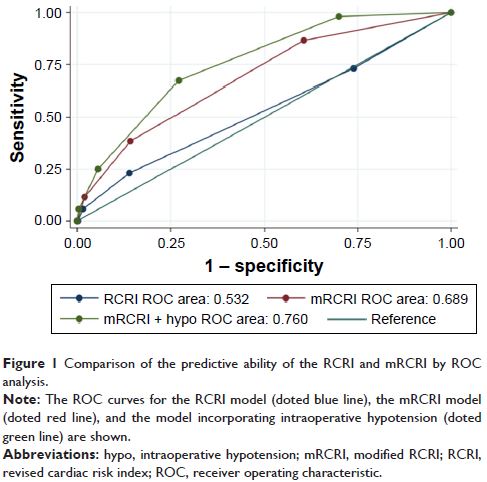108384
论文已发表
注册即可获取德孚的最新动态
IF 收录期刊
- 3.4 Breast Cancer (Dove Med Press)
- 3.2 Clin Epidemiol
- 2.6 Cancer Manag Res
- 2.9 Infect Drug Resist
- 3.7 Clin Interv Aging
- 5.1 Drug Des Dev Ther
- 3.1 Int J Chronic Obstr
- 6.6 Int J Nanomed
- 2.6 Int J Women's Health
- 2.9 Neuropsych Dis Treat
- 2.8 OncoTargets Ther
- 2.0 Patient Prefer Adher
- 2.2 Ther Clin Risk Manag
- 2.5 J Pain Res
- 3.0 Diabet Metab Synd Ob
- 3.2 Psychol Res Behav Ma
- 3.4 Nat Sci Sleep
- 1.8 Pharmgenomics Pers Med
- 2.0 Risk Manag Healthc Policy
- 4.1 J Inflamm Res
- 2.0 Int J Gen Med
- 3.4 J Hepatocell Carcinoma
- 3.0 J Asthma Allergy
- 2.2 Clin Cosmet Investig Dermatol
- 2.4 J Multidiscip Healthc

修订后的心脏危险指数临床应用于中国老年冠心病患者
Authors Che L, Xu L, Huang YG, Yu CH
Received 25 June 2017
Accepted for publication 30 October 2017
Published 22 December 2017 Volume 2018:13 Pages 35—41
DOI https://doi.org/10.2147/CIA.S144832
Checked for plagiarism Yes
Review by Single-blind
Peer reviewers approved by Dr Akshita Wason
Peer reviewer comments 2
Editor who approved publication: Dr Wu
Objectives: The revised Cardiac Risk Index (RCRI) is the most widely used risk
prediction tool for postoperative cardiac adverse events. We aim to explore the
predictive ability of the RCRI in older Chinese patients with coronary artery
disease (CAD) undergoing noncardiac surgery, which has not been previously
evaluated.
Methods: We performed a multicenter, prospective study. We enrolled a total
of 1,202 patients, aged >60 years, with a history of CAD who underwent
noncardiac surgery. Perioperative data were extracted from an electronic
database. The primary end point was defined as an occurrence of a postoperative
major cardiac event (PoMCE) within 30 days. Logistic regression analysis was
performed to evaluate the performance of the RCRI. A modified RCRI was created
and compared with the original RCRI with regard to its ability to predict
postoperative cardiac events.
Results: Of the enrolled patients, 4.3% experienced PoMCE. Most components
of the RCRI were not predictive of postoperative cardiac events with the
exception of insulin-dependent diabetes mellitus (odds ratio =2.38, 95% CI:
1.11–5.11; P =0.03). The RCRI performed no
better than chance (area under the curve =0.53; 95% CI: 0.45–0.61) in
identifying patients’ cardiac risk. The modified score had a higher
discriminatory ability toward PoMCE (c index, 0.69 versus 0.53; P <0.01).
Conclusion: The original RCRI shows poor predictive ability in Chinese patients
with CAD undergoing noncardiac surgery.
Keywords: cardiovascular risk factors, older patient, coronary artery
disease, risk prediction model
